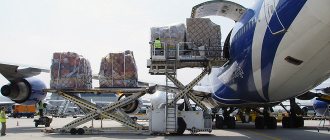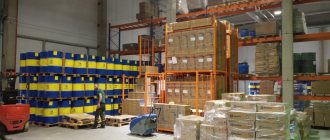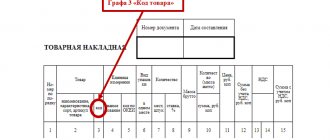The term “dangerous” refers to those goods that have characteristics that can cause harm to people or animals, the environment or infrastructure, as well as the tangible property of individuals or legal entities. This does not mean that just by the fact of their existence, these objects can threaten the life or safety of certain objects. But under a special combination of circumstances and factors, in particular during improper transportation, unloading and loading of such substances or objects, undesirable consequences may arise.
UN List of Hazardous Substances
The UN organization has issued a special list that lists and classifies dangerous goods. In total, this list contains more than 3,500 items. The most common ones can be identified:
- fuels, chemicals, pesticides and acids
- aerosols, paints, solvents, adhesives
- lithium batteries
- medicines, fire extinguishers
All of these items, if handled incorrectly, can cause serious harm to the environment, infrastructure or living beings. In particular, there is a risk of fire, death of people or animals, radioactive contamination, environmental pollution, infectious contamination and other irreparable consequences.
Each item on the list has its own comments, which indicate how certain goods should be transported, how to properly pack and label them. Also in the table there are notes on the preferred loading/unloading methods and instructions on cargo compatibility.
Legislative framework for the transportation of dangerous goods
Since cargo that is dangerous if transported incorrectly can cause irreparable harm to the environment, there are special rules that allow you to avoid negative consequences. And if previously the transportation of substances from the UN list was regulated within the Russian Federation by the regulations of PPOGAT, then from 2021 the legislative basis is the European Agreement concerning the International Carriage of Dangerous Goods by Road, or otherwise ADR. This agreement is regularly improved and updated, and is also strictly monitored, so that risks can be minimized.
General classification of dangerous goods according to ADR
In order to carry out high-quality transportation of hazardous substances by truck, it is imperative to find out what class the cargo belongs to in accordance with ADR:
- 1. Explosive objects and suspensions that can cause a chemical reaction with subsequent release of gases. As well as pyrotechnic substances and other substances and products that fit this section.
- 2. Gases – compressed, liquefied, cooled, adsorbed, dissolved, aerosol and others.
- 3.Liquids that can quickly ignite.
- 4.1. Self-reactive, flammable and desensitized explosive solids. Powdery, thermally unstable and polymerizable.
- 4.2. Self-igniting pyrophoric and self-heating substances.
- 4.3. Substances that can release flammable gases upon contact with water.
- 5.1. Oxidizing substances.
- 5.2. Peroxides of organic origin.
- 6.1. Toxins and poisons that can cause significant harm to humans, animals or the environment if consumed or in contact.
- 6.2. Cargo containing viruses, bacteria or other microorganisms.
- 7. Substances with pronounced radioactivity.
- 8. Substances of a corrosive nature.
- 9. Solid objects, liquids and elements that are not included in other paragraphs, but pose a danger to living beings and the environment.
Each class has its own regulations, according to which it is necessary to fulfill all the requirements for the correct and safe transportation of cargo. Failure to comply with these recommendations can lead to emergency situations, unforeseen consequences and loss of life.
Technical preparation of a vehicle for transportation of hazard class 6
The general rules for the transportation of dangerous goods of types 6.1, 6.2 mean the application of general priority measures to prevent possible accidents during movement, as well as the delivery of materials. The level of danger of such specific compounds is high due to increased volatility. Their biological effect on humans remains harmful even at large distances from a possible accident. In addition to technical training, drivers are required to take into account the properties of certain compounds. Dangerous goods should be transited only in accordance with state ADR regulations. Packaging in containers is carried out in accordance with the established transportation rules. For additional security, transportation can be carried out under the control of special armed guards, this is especially important for intercity flights.
CLASSES AND DANGER SIGNS
Dangerous goods pose various hazards . These could be, for example:
- flammability
- flammability
- spontaneous ignition
- spontaneous reactions (polymerization)
- dangerous reactions with water or other substances
- explosiveness
- increased toxicity, health hazard
- corrosive, corrosive
- release of toxic gases during combustion
- threat to water resources
- gas pressure
- radioactivity
- inertia
- danger of infection
- high temperature, etc.
In accordance with UN recommendations, a classification was carried out for transported dangerous goods, which provides for the division of dangerous goods into classes (hazard classes).
Some examples of classifying cargo into different hazard classes:
to class 1 - black powder, explosives, fuse cords to class 2 - chlorine gas, butane, propane to class 3 - gasoline, fuel oil, bitumen compounds to class 4 - matches, phosphorus, calcium carbide to class 5 - hydrogen peroxide, dibenzene peroxide to class 6 - hydrocyanic acid, disinfectants, clinical (hospital) waste to class 7 - uranium nitrate, medical supplies and equipment using radioactive elements to class 8 - sulfuric acid, mercury, sodium alkali to class 9 - asbestos, lithium batteries , airbags for cars
Classes of dangerous goods
Dangerous goods of each class, in accordance with their physical and chemical properties, types and degree of danger during transportation, are divided into subclasses, categories and groups, according to GOST 19433-88, given below.
- CLASS 1 - explosive materials that, due to their properties, can explode, cause a fire with an explosive effect, as well as devices containing explosives and means of explosion intended to produce a pyrotechnic effect;
- subclass 1.1 - explosive and pyrotechnic substances and products with a mass explosion hazard, when the explosion instantly covers the entire load;
- subclass 1.2 - explosive and pyrotechnic substances and products that do not explode in mass;
- subclass 1.3 - explosives and pyrotechnic substances and products that have a fire hazard with little or no explosive effect;
- subclass 1.4 - explosive and pyrotechnic substances and products that pose a slight risk of explosion during transportation only in the event of ignition or initiation, and do not cause destruction of devices and packaging;
- Division 1.5 - explosives with a mass explosion hazard that are so insensitive that initiation or transition from combustion to detonation during transportation is unlikely;
- subclass 1.6 - products containing substances that are exclusively insensitive to detonation, do not explode in mass and are characterized by a low probability of accidental initiation;
Possible additional hazards
Caustic substance Poisonous substance
Class 1 substances are divided into 6 subclasses:
1.1 Substances and objects that pose a mass explosion hazard
1.2 Substances and objects that pose a risk of formation of fragments, scattering of exploded residues, but do not contain the danger of a massive explosion.
1.3 Substances and objects that are fire hazardous; minor danger due to air shock wave, fragments; do not carry the danger of a massive explosion... but have thermal radiation and burn with the formation of a slight air shock wave. The risk of splinters is low.
1.4 Substances and objects that do not pose any significant danger. There is only a small risk of explosion. The consequences of the explosion affect only the cargo shipment itself.
1.5 Very refractory substances capable of massive explosion
1.6 Extremely insensitive substances capable of massive explosion
Main danger : Destruction within the explosion radius
Additional hazards : damage and destruction caused by fragments, formation of smoke and heat, occurrence of an air shock wave, fire hazard
Remember:
Handling such substances requires the greatest care
- Substances can react to shocks and shocks
- Substances may react to increased temperature
- Substances may react to produce sparks
CLASS 2 - gases compressed, liquefied by cooling and dissolved under pressure, meeting at least one of the following conditions:
- absolute vapor pressure at a temperature of 50C is equal to or higher than 3 kgf/cm300 kPa);
- critical temperature below 50C. According to their physical state, gases are divided into:
- compressed, the critical temperature of which is below -10C;
- liquefied, the critical temperature of which is equal to or higher than -10C, but below 70C;
- liquefied, the critical temperature of which is equal to or higher than 70C;
- dissolved under pressure;
- liquefied by supercooling;
- aerosols and compressed gases subject to special regulations.
Subclasses:
- subclass 2.1 - non-flammable gases;
- subclass 2.2 - non-flammable toxic gases;
- subclass 2.3 - flammable gases;
- subclass 2.4 - flammable toxic gases;
- subclass 2.5 - chemically unstable;
- subclass 2.6 - chemically unstable poisonous.
| Non-flammable gas | flammable substance | poisonous substance |
Possible additional hazards
| № 5.1 | № 8 |
| Flammable substance | Caustic substance |
Examples of substances classified as Class 2
| Propane | Oxygen | Hair fixation spray |
| Class 2 | Class 2 | Class 2 |
| Digit 2, group F | Digit 1, group 0 | Digit 5, group F |
| UN-No. 1978 | UN-No. 1072 | UN-No. 1950 |
The main, main danger : the pressure under which the gas is in the container
Additional hazards : flammability, toxicity, choking hazard from gases, extremely low temperatures, combustion assistance, corrosive, corrosive
Designation and meaning of the groups into which gases are divided:
A asphyxiating O oxidizing F flammable T poisonous TF poisonous, flammable TC poisonous, caustic TO poisonous, oxidizing TFC poisonous, flammable, caustic TOC poisonous, oxidizing, caustic
CLASS 3 - flammable liquids, mixtures of liquids, as well as liquids containing solids in solution or suspension, which emit flammable vapors having a flash point in a closed crucible of 61C or lower;
- subclass 3.1 - flammable liquids with a low flash point and liquids having a flash point in a closed cup below minus 18C or having a flash point in combination with other hazardous properties other than flammability;
- subclass 3.2 - flammable liquids with an average flash point - liquids with a flash point in a closed crucible from minus 18 to plus 23C;
- subclass 3.3 - flammable liquids with a high flash point - liquids with a flash point from 23 to 61C inclusive in a closed crucible.
Flammable substance
Possible additional hazards
| № 6.1 poisonous substance | № 8 corrosive substance |
(flammable liquids with a flash point of a maximum of 61 degrees Celsius and flammable liquid substances, as well as molten solids with a flash point above 61 degrees Celsius, which are carried or transported heated to their flash point or higher)
Examples of Class 3 substances
| Petrol | Ethanol | Methyl alcohol |
| 1203, class 3, number 3, c) ADR | 1170, class 3, number 3, c) ADR | 1230, class 3, number 17, c) ADR |
Main (main) hazard: combustibility, flammability
Additional hazards:
toxicity, causticity, flammability, danger of explosion upon transition to a gaseous state, potential for damage to water resources
Flammable liquid substances are divided according to their degree of danger:
a = very dangerous substances
b = hazardous substances
c = less hazardous substances
CLASS 4 - flammable substances and materials (except those classified as explosive) that can easily ignite during transportation from external ignition sources, as a result of friction, moisture absorption, spontaneous chemical transformations, and also when heated;
- subclass 4.1 - flammable solid substances that can easily ignite from short-term exposure to external ignition sources (sparks, flames or friction) and burn actively;
- subclass 4.2 - self-igniting substances that, under normal transportation conditions, can spontaneously heat up and ignite;
- subclass 4.3 - substances that emit flammable gases when interacting with water.
Fire hazardous, flammable substance
Examples of substances classified in Class 4.1
| matches | celluloid photographic film |
| UN-No. 1944 | UN-No. 1324 |
| class 4.1, number 2 c) ADR | class 4.1, number 3 c) ADR |
Main (main) danger:
Flammability (fire hazard)
Additional hazards:
Toxic, corrosive, dust substances may explode
Flammable solids are divided according to their degree of danger:
a = very dangerous substances
b = hazardous substances
c = less hazardous substances
CLASS 5 - oxidizing substances and organic peroxides that can easily release oxygen, support combustion, and can also, under appropriate conditions or in mixture with other substances, cause spontaneous combustion and explosion;
- subclass 5.1 - oxidizing substances that themselves are not flammable, but contribute to the easy flammability of other substances and release oxygen during combustion, thereby increasing the intensity of the fire;
- Division 5.2 - Organic peroxides, which are generally flammable, can act as oxidizing agents and react dangerously with other substances. Many of them catch fire easily and are sensitive to shock and friction.
Substances that promote combustion
Class 5.1 includes, for example:
| aqueous solution (70%) hydrogen peroxide | nitrogen-containing mineral fertilizers type A 1 |
| 2015 class 5.1, | 2067 class 5.1, |
| number 1 a) ADR | number 21 c) ADR |
Main (main) danger:
substances of this class promote combustion; contact with flammable substances should be avoided
Additional dangers:
skin irritant, toxic, caustic
Based on their degree of danger, substances of class 5.1 are classified into one of the following groups:
a = oxidizing agents that strongly promote combustion
b = oxidizers that promote combustion
c = oxidizing agents that contribute little to combustion
CLASS 6 - toxic and infectious substances that can cause death, poisoning or disease if ingested or in contact with skin and mucous membranes;
- subclass 6.1 - poisonous (toxic) substances that can cause poisoning if inhaled (vapors, dust), ingested or in contact with skin;
- subclass 6.2 - substances and materials containing pathogenic microorganisms dangerous to people and animals.
Toxic substances
Class 6.1 includes, for example:
| Arsenic acid, liquid | Pest control agent, |
| 1553 class 6.1, | Contains 3027 rakumin, grade 6.1, |
| number 51 a) ADR | number 73 b) |
Main (main) danger:
strong poison effect
Additional hazards:
flammability, corrosive effect, formation of toxic gases upon contact with water
Toxic substances, according to the degree of their danger, are divided into groups, designated by small letters:
a = very toxic substances
b = toxic substances
c = substances with a weak toxic effect
CLASS 7 - radioactive substances with a specific activity of more than 70 kBq/kg (2 nCi/g).
Possible additional hazards
| self-igniting substances | flammable substances or organic peroxides | caustic substances |
Class 7 includes, for example:
| Type A cargo shipment with radiopharmaceutical products |
Main (main) danger:
radioactive radiation in the form of alpha, beta or gamma radiation
Additional hazards:
substances may be self-igniting, may lead to ignition, may be caustic, may lead to the release of thermal energy
Possible damage from exposure to radiation: burns, immune system disorders, changes in blood composition, hair loss, cancer, leukemia, genetic disorders manifested in offspring, death.
Transport safety is achieved through the cargo shipment itself: the radioactive contents of the tanker or cargo shipment must be contained so that if it were to be “released” (for example, as a result of an accident), virtually nothing would happen
or packaging must be used that can withstand stress in the event of an accident (so-called B-packaging).
CLASS 8 - caustic and corrosive substances that cause damage to the skin, damage to the mucous membranes of the eyes and respiratory tract, corrosion of metals and damage to vehicles, structures or cargo, and can also cause fire when interacting with organic materials or certain chemicals;
- subclass 8.1 - acids,
- subclass 8.2 - alkalis;
- subclass 8.3 - various caustic and corrosive substances.
Class 8 includes, for example:
| 2796 sulfuric acid | 2672 ammonia solution 30% |
| class 8, | class 8, |
| number 1 b) ADR | number 43 c) ADR |
Main (main) danger:
corrosive (corrosive) effect on living tissues and materials
Additional hazards:
toxicity, fire hazard, spontaneous combustion of substances, formation of flammable gases upon contact with water, fire-promoting effects
Corrosive substances, according to their varying degrees of danger, are divided into groups, designated by small letters:
a = very corrosive substances
b = caustic substances
c = substances with a weak corrosive effect.
CLASS 9 - substances with a relatively low risk during transportation, not classified in any of the previous classes, but requiring the application of certain rules for transportation and storage;
- subclass 9.1 - solid and liquid flammable substances and materials that, by their properties, do not belong to classes 3 and 4, but under certain conditions can be fire hazardous (flammable liquids with a flash point from +61 C to +100 C in closed container, fibers and other similar materials);
- Division 9.2 - substances that become caustic and corrosive under certain conditions.
Class 9 includes, for example: lithium batteries
Hazardous properties:
fire hazard, health hazard, explosion hazard, carbon dioxide generation, environmental hazard and water pollution
Substances of class 9, according to the degree of their danger, are classified into the following groups:
b = hazardous substances
c = less hazardous substances
Tara and packaging.
- Dangerous goods must be presented by shippers for transportation in containers and packaging provided for by the standards or technical specifications for these products and GOST 26319-84 “Dangerous goods. Package".
- Containers and packaging must be durable, in good working order, completely prevent leakage and spillage of cargo, ensure its safety and safety of transportation. The materials from which the containers and packaging are made must be inert with respect to the contents.
- Dangerous goods that emit flammable, poisonous, caustic, corrosive gases or vapors, goods that become explosive when dry or can react dangerously with air and moisture, as well as goods with oxidizing properties must be packed tightly*. —————- * Hermetic containers are containers whose design ensures the impermeability of gases, vapors and liquids.
- Dangerous goods in glass containers must be packed in durable boxes (wooden, polymer, metal) with the free space filled with appropriate non-flammable cushioning and absorbent materials. Small packaged goods transported as non-hazardous according to clause 2.1.43 may be packed in corrugated cardboard boxes. Boxes must have shells, liners, partitions, grilles, gaskets, and shock absorbers. The walls of the boxes must be 5 cm higher than the sealed bottles and cans. When transporting in small shipments, dangerous goods in glass containers must be packed in thick wooden boxes with lids.
- Dangerous goods in metal or polymer cans, cans and canisters must be additionally packed in wooden boxes or crates.
- Dangerous goods in bags and boxes made of corrugated cardboard, if such packaging is provided for by standards or technical specifications for products, must be transported by carload. When transported in small shipments, dangerous goods in bags must be packed in rigid transport containers (metal or plywood drums, barrels, wooden or metal boxes).
- When presenting liquid dangerous goods for transportation, the container must be filled to the standard established by the standards or technical specifications for these products.
- Combined packaging in one cargo package is permitted only for those dangerous goods that are permitted for joint transportation in one vehicle. In this case, each substance is packaged separately in accordance with the standards or technical specifications for this substance. The packaged substances are placed in a dense wooden box with nests. The bottom of the box, free spaces in the nests, as well as the free space under the lid are filled with suitable soft, non-combustible packaging material. The box is tightly closed with a lid. The gross weight of such a place should not exceed 50 kg. All substances packaged together must be named on the delivery note indicating the weight of each substance.
- Dangerous goods permitted for transportation in containers must be packaged in a similar manner. 2.1.9. Dangerous goods traveling to the Far North and hard-to-reach areas must have containers and packaging in accordance with GOST 15846-79 “Products sent to the Far North and hard-to-reach areas. Packaging, labeling, transportation and storage."
- When transporting liquid dangerous goods by carload, the shipper is obliged to place at least 1% of empty containers in the vehicle in case of damage to individual cargo items.
BRIEF DICTIONARY
Explosive. A solid or liquid substance (or mixture of substances) that is itself capable of a chemical reaction, releasing gases of such temperature and pressure and at such a rate that it causes damage to surrounding objects. Pyrotechnic substances, even if they do not emit gases, are classified as explosive. A substance which is not itself explosive but can form an explosive atmosphere of gas, vapor or dust is not classified as explosive. Explosive product. An article containing one or more explosives. Outer packaging. A container used by a single shipper with a chain of combining explicit or several packages of cargo and forming a single processed unit for ease of handling and storage. Note. This definition does not include a unit load facility. State of departure. The state in whose territory the cargo was originally loaded onto the aircraft. State of registration. The state in whose registry the aircraft is entered. State of the operator. The State in which the operator's principal place of business is located or, if the operator does not have such a place of business, his permanent place of residence. Freight shipment. One or more packages of dangerous goods accepted by the operator from one shipper at one time and at one address, included in one shipment and transported to one consignee at one destination. Cargo aircraft. Any aircraft, other than a passenger aircraft, that carries cargo or property. Cargo piece (packaging). The final product of a cargo packaging operation, consisting of packaging and contents. Cargo container. See Cargo Bundle Facility. Containers. Containing vessels with any closure means intended for receiving and containing substances or articles. Liquid dangerous goods. Unless otherwise stated, dangerous goods with a melting point or initial melting point of 20°C or less at a pressure of 101.3 kPa should be treated as liquids. A viscous substance, the specific melting point of which cannot be measured, is considered to be a Liquid if it is determined to be such by the ASTM D 4359-90 test or the flow test (penetrometer test) prescribed in Appendix A.3 of the United Nations publication ECE /TRANS/80 (Volume 1) (ADR) subject to the following modifications: the penetrometer shall comply with ISO 2137-1985 and the test shall be carried out for viscous substances of any class. Incident involving dangerous goods. An event related to and associated with the carriage of dangerous goods by air, which does not necessarily occur on board an aircraft and results in personal injury to a person, property damage, fire, damage, powder, leakage of liquid or radiation and other phenomena, indicating a violation of the packaging, but not an incident involving dangerous goods. Any event involving the carriage of dangerous goods that poses a serious threat to the aircraft or its occupants may also be considered a dangerous goods incident. Exception. A provision according to which a particular type of dangerous goods is not subject to the requirements generally applicable to that type. Net quantity. The weight or volume of the dangerous goods constituting the contents of one package, excluding the weight or volume of any packaging material, with the exception of explosives and matches, for which the net weight is the mass of the finished product without packaging. Aircraft commander. A pilot responsible for the control of an aircraft and its safety during flight. Flammable. Note. In English, the words "flammable" and "inflammable" have the same meaning. Gross weight. Total weight of the cargo package. International System of Units (SI). A rational and uniform system of units that provides the basis for the units of measurement used in air and ground operations within the meaning of Annex 5 to the Convention on International Civil Aviation. Proper shipping name. The name to be used to describe a specific article or substance on all transport documents and notices and, where appropriate, on packagings. Note. These names are given in the List of Dangerous Goods. Incompatible. A term applied to dangerous goods which, when mixed, may produce dangerous heat or gases or produce corrosive substances. ID number. Temporary identification number for items (list of dangerous goods) that have not been assigned a UN number. UN number. A four-digit number assigned by the United Nations Committee of Experts on the Transport of Dangerous Goods to identify a substance or a specific group of substances. Dangerous goods. Articles or substances which, when transported by air, are likely to pose a significant hazard to health, safety or property and which are classified. Liberation. An order from the relevant national authorities providing for an exemption from the provisions. Passenger aircraft. An aircraft carrying any person who is not a member of the crew, an employee of the operator on duty, an authorized representative of the relevant national authority, or accompanying a consignment of cargo or other cargo. Pyrotechnic substance. Any compound or mixture intended to produce an effect in the form of heat, sound; gas or smoke, or a combination thereof, resulting from a self-sustaining exothermic chemical reaction that occurs without detonation. Pyrophoric liquid. A liquid capable of instantly igniting on contact with air whose temperature is 55°C or lower. Incident involving dangerous goods. An event related to and associated with the carriage of dangerous goods by air which results in death or serious injury to a person or serious property damage. Permission. Authorization is issued by the appropriate national authority. Note: Unless otherwise agreed, authorization only from the State of origin is required. Serious bodily injury. A bodily injury that is sustained by a person during an incident and that: a) requires hospitalization for more than 48 hours within seven days of the injury; or b) resulted in a fracture of any bone (except simple fractures of the fingers, toes or nose); or c) involves tissue tears causing severe bleeding, nerve, muscle or tendon damage; or d) involves damage to any internal organ; or e) is associated with second and third degree burns or any burns affecting more than 5% of the body surface; or f) involves confirmed exposure to infectious substances or harmful radiation. Relevant national authority . Any body authorized or otherwise recognized by the state whose activities are related to the implementation of the provisions contained in these Instructions. Cargo packaging equipment. Any type of cargo container, aviation container, aircraft pallet with mesh, or aircraft pallet with mesh over protective hoods. Note 1: This definition does not include outer packaging. Note 2: This definition does not include a shipping container for radioactive materials. Solid dangerous goods. Dangerous goods, other than gases, which do not fall within the definition of “liquid dangerous goods”. Flash point. The lowest temperature of a liquid at which flammable vapors of sufficient concentration are released in the test vessel that can ignite in the air upon brief contact with an external ignition source. Packaging kit. Containers and any components or materials necessary to provide the container's function to contain the contents and to meet minimum packaging requirements. Packing of cargo. The technology and operations by which articles or substances are wrapped and/or contained in containers or otherwise securely protected.
Class 7 - Radioactive material
The most difficult class for cargo transportation is radioactive substances and materials. They require special packaging, special labeling and enhanced personal protection for drivers and other personnel.
The group includes radioactive substances whose specific activity is more than 70 kBq/kg (2 nCi/g). The following categories of increasing danger are considered (except for class):
- I—RRW—white, slightly radioactive substances;
- II - RRY - yellow, radioactivity higher than that of the first category;
- III—RRY—yellow, radioactivity higher than the second.
If the shipment contains fissile material, an appropriate label is required, as is the case for each category.
Vehicle equipment
Among the various methods and violations of the movement of dangerous goods on the territory of Russia, the most common are transporting toxic materials without the necessary documents, failure to comply with basic safety standards, and exposing the population to danger. The punishment can be very severe:
- system of fines for drivers, legal entities and cargo owners (from 10,000 to 500,000 rubles)
- deprivation of rights for the carrier for up to 1 year
- detention of a truck with cargo.
For these reasons, it is better to equip your car with the necessary plates, signs and beacons. Danger signs, symbols of the substance being transported, measuring 25x25 cm or 10x10 cm must be placed on the vehicle. Signs can be placed on the sides, as well as on the rear end of containers and tanks, etc. When transporting chemicals (6.1), the container must be marked; The UN number is given.
Protection of the driver and passengers
Cargo carriers must be high-class drivers who comply with all instructions and rules prescribed by the regulations. In addition to possible passengers, these transportations are dangerous for the life of the driver himself, a representative of logistics companies responsible for transportation safety. What measures can be taken before toxic materials are transported to their destination?
- in addition to the driver having a permit for cargo transportation, bodies, tanks, barrels, etc. must be disinfected;
- carry out proper labeling of toxic cargo;
- install warning signs outside in advance;
- Additional security can be provided by security guards accompanying cargo transportation.
Class 2 - Gases
The second class of shipments dangerous for transportation includes liquefied, dissolved and compressed gases that meet one of the conditions:
- kgf/cm2 (300 kPa) - absolute vapor pressure value (up to 50 °C);
- less than 50 °C is the critical temperature.
Subclasses of gases and their mixtures:
- non-flammable;
- poisonous non-flammable;
- flammable;
- toxic, flammable;
- chemically unstable;
- poisonous, chemically unstable.
Class 3 - Flammable liquids
Mixtures of liquids, liquids, solids in solutions and suspensions, capable of releasing vapors that are easily flammable under certain conditions, with a flash point in a closed space of 61 ° C or less, belong to the third hazard category.
Their subclasses:
- flammable liquids with a fairly low flash point in a closed space - below –18°C;
- with a flash point from –18 °C to +23;
- with a high flash point - from +23 °C to +61.
Action plan in case of emergencies (incidents)
If an emergency situation arises during the transportation of toxic materials, the vehicle operator or shift personnel must immediately notify the local authorities of the State Technical Supervision Authority of the Russian Federation. This message contains the following information: circumstances of the accident, name of the dangerous cargo, its quantity. Regional authorities must immediately inform the central office of the Gosgortekhnadzor of Russia. Restoration plan: determination of the nature of the lesion; assessment of the situation; counting of affected persons; plan to eliminate possible infestation; calculation of the necessary funds to carry out liquidation; order given to special forces; neutralization of the area and toxic substances in case of leakage or drainage; organization of medical support. First aid measures for victims and liquidation of accidents where high-risk cargo is transported can only be carried out taking into account the properties of the goods being transported. Unloading dangerous goods from containers or containers into soil and water bodies is strictly prohibited.









